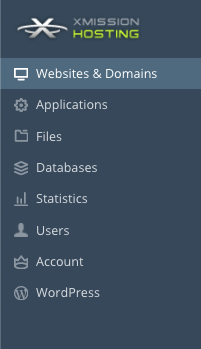About FTP and Shared Hosting
Plesk Unlimited Hosting: About FTP and Unlimited Hosting
- What is FTP?
FTP (File Transfer Protocol) is a protocol used to transfer files over a TCP/IP network (Internet, UNIX, etc.). For example, after developing the HTML pages for a website on a local machine, they are typically uploaded to the Web server using FTP.
FTP includes functions to log onto the network, list directories, and copy files. FTP operations can be performed by typing commands at a command prompt or via an FTP client running under a graphical interface such as Windows.
We highly recommend using an FTP client, such as Filezilla which is available at http://filezilla-project.org/.
As there are many FTP clients out there, the interface for each will differ slightly. The screenshots used in the instructions below are from Filezilla but the basic settings should be the same no matter what FTP client you choose.
- How does FTP work with my Unlimited Hosting?
FTP is the recommended way to upload the files you have created for your website to our server. In general, FTP, both as a command-line function and as utility, is more reliable than uploading files via your web browser. It is also a useful tool in making files available to friends, family, or clients without sending bulky attachments via email.
- How do I connect to XMission's Plesk Unlimited Hosting FTP server via an FTP Client?
The first thing you'll want to do is log into your Plesk Control Panel at http://plesk01.xmission.com:8443. For more information about logging into your Plesk Control Panel, please see Administration/Logging in.
Once logged in, click on the "Websites & Domains" tab as seen below:
Near the bottom of the page, you should see a list of your domains. To proceed, simply click on the blue domain name you need information about. In this screenshot, the example would be example.com.
The fourth section of the next page, just below the "Document root" info, is the temporary URL for your site. In this case, the example URL would be example.com.198-60-22-66.temphost.xmission.com.
This will be the host name you use to connect to via FTP.
We recommend using Smart FTP](PC), or Fetch(Mac), which are GUI clients that make using FTP easier and more user-friendly. Most FTP clients require this basic information: Site Label = XMission
- Host Address = ftp.xmission.com (or ftp://ftp.xmission.com)
- UserID or Username = username (Your XMission username.)
- Password = password (Your XMission password.)
Another way to connect is to use your browser. Most versions of Netscape, Internet Explorer, and other browsers, such as Mozilla, will allow you to connect to an FTP server using the following format:
ftp://username:password@ftp.xmission.com/
You would, of course, replace "username" with your XMission account name, and "password" with your XMission password.
How do I connect to XMission's FTP server with a secure connection?
This is the basic information for most clients
- Host Address = shell.xmission.com
- UserID or Username = username (Your XMission username.)
- Password = password (Your XMission password.)
- Port = 22
If you are using a Terminal Window with Mac, Windows or Linux:
- In you terminal window type sftp yourusername@shell.xmission.com (yourusername = Your XMission username)
How can I make my files available to others?
When you connect to the FTP server and you're in your home directory, you should see a directory named FTP. In this directory, you can create a folder named "outgoing". Be sure the permissions are group readable, or chmod 755. You can put your files in this directory and give people the following URL for access:
ftp://ftp.xmission.com/pub/users/u/username/outgoing/filename
You would replace "u" with the first letter of your account name, "username" with your XMission username, and "filename" with the name of the file you are referring people to (or you can leave off the file name and let them browse the directory).
How can I have others send files to me via FTP?
Much the same as explained above, you can create a directory named "incoming" in your FTP directory. Make sure this directory is NOT readable and is group writable, or chmod 733. You can give people the following URL for access:
ftp://ftp.xmission.com/pub/users/u/username/incoming
You would replace "u" with the first letter of your account name, "username" with your XMission username.
Speed depends on when you use it. During prime time, you sometimes share our FTP server with up to 100 of other Internet users around the world. This can be heavy load for the machine. Because of the high load this can cause, there is a limit of 100 simultaneous connections on the FTP server. Though it's rare, you may have to wait a couple of minutes to use it.
What are some common mistakes?
One common mistake is not setting proper file read permissions. This includes restricting everyone from retrieving those files, and leaving directories with world writable and world readable flags set. These directories often end up as trading grounds for software pirates. Also, you should occasionally check any incoming directories for files someone may have dropped for you, and clean up old unneeded files.
Another common mistake is attempting to upload hidden files. FTP will not allow you to upload a file with a "." preceding the file name.


